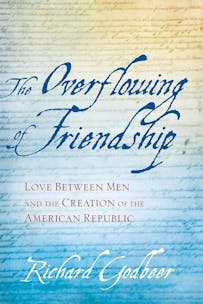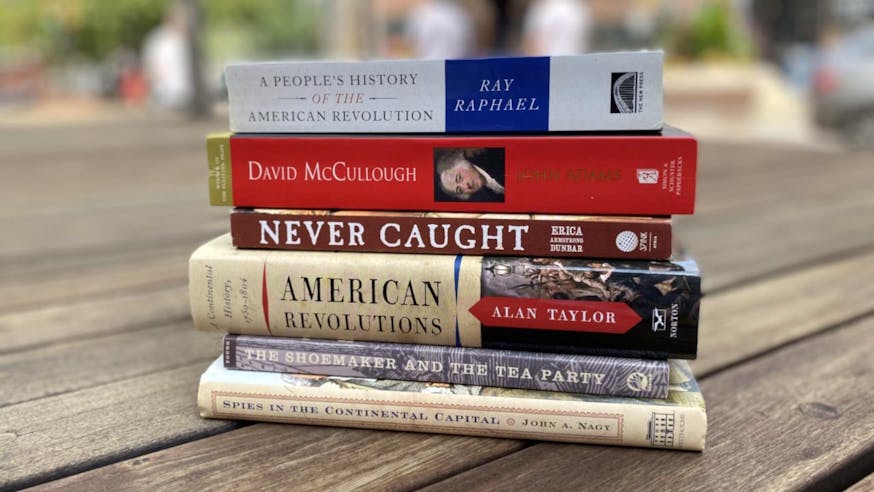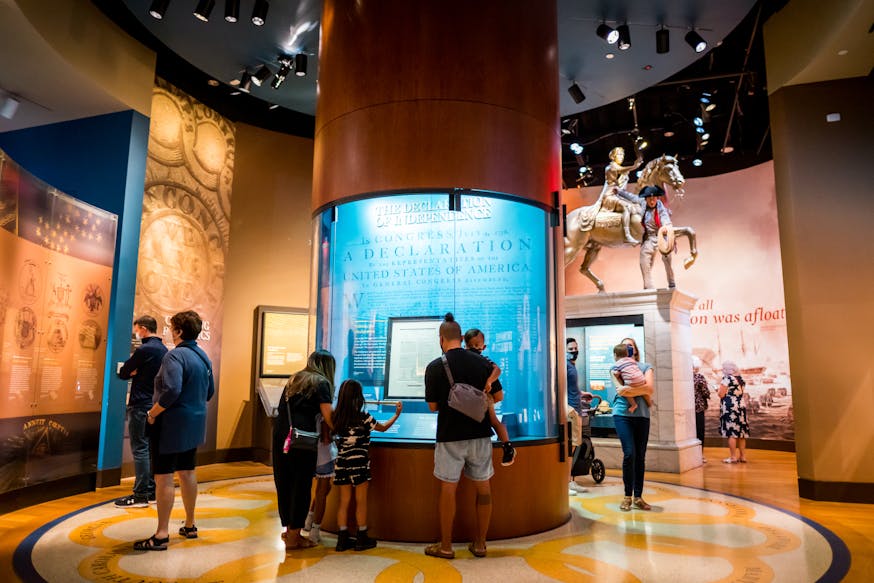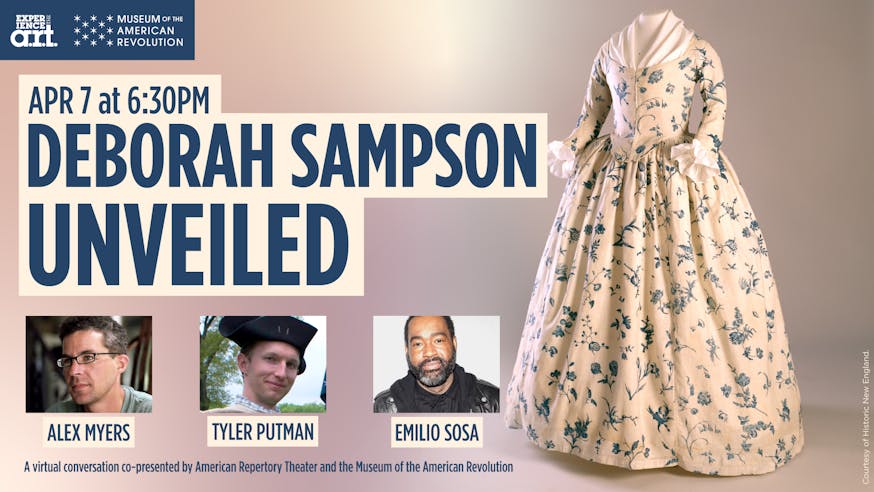Read the Revolution
The Overflowing of Friendship
October 11, 2023
Purchase the book from Johns Hopkins Unversity Press.
The letters exchanged by America’s founding fathers are filled with argument and debate but also with moments of sweet tenderness, sentimental friendship, and expressions of love shared between men. In the early years of the United States, men walked arm-in-arm down the streets and wrote effusive poetry to each other. What can the love shared by these men tell us about the origins of our country?
In The Overflowing of Friendship: Love between Men and the Creation of the American Republic, historian Richard Godbeer explores how a new culture of sensibility, religious practices, and independence itself placed male friendships – which ranged from brotherly collaborations to romantic affection – at the center of the new American republic. He asks us to set aside our preconceptions about gender and sexual identities in order to imagine a world that sometimes reminds us of today and other times stands in stark contrast.
In this excerpt, Godbeer explores how we might catch a glimpse of this past world of male friendship and love and how those relationships compare to our modern understanding.
Excerpt
Two Virginians, William Wirt and Dabney Carr, first became acquainted in the 1790s as eager young lawyers soliciting for clients. Riding together from courthouse to courthouse, they laid the foundation for a friendship that would last throughout their lives. William later reminisced about these early years of their friendship with “a swelling of the heart.” When Dabney penned for him a “rhapsody on life, and love, and friendship,” William wrote in response, “How grateful are such effusions, how grateful to my mind and to my heart—They make me proud of your friendship—Ah! My dear Dabney, it is at such moments that my soul flies out to meet yours—and as they mix and commingle I feel myself exalted and refined.” Willian rejoiced in the “intimacy and consciousness which seem[ed] to subsist between [their] hears and understandings.” His friend’s letters “always spread such a sweet glow through [his] breast” and their relationship, he declared, was “among the purest and sweetest sources of happiness” that he had “upon this earth.”
When I first encountered declarations such as these in letters and journal entries written by eighteenth-century American men, I was moved and also intrigued. Indeed, their emotional intensity was so striking, and they prompted me to ask many questions that it seemed impossible to pass them by. How common were such expressions of love between men during this period? What did loving friendships mean to these men as a part of their personal and social identities? In what ways, if at all, did male friends express physically or even sexually their feelings for one another? [...] Before I knew it, I was hooked, and this book is the result.
Figuring out what these romantic friendships mean to people living in the eighteenth century involves setting aside modern assumptions about love between members of the same sex. Perhaps it would be helpful to begin by acknowledging those assumptions and discussing the challenges they pose if we want to understand a world very different from our own.
Sign Up!
Get biweekly Read the Revolution featured excerpts right to your inbox.
When I read declarations of love such as those quoted above to my students or friends, they usually either squirm in discomfort or wriggle in astonished delight. Once they have recovered sufficiently to start asking questions, they almost always want to know if the authors were “gay,” “homosexual,” or “queer.” In common with many people today, they assume that expressions of loving devotion must imply a desire for sexual intimacy, or, to put it another way, that people who are in love with one another must want to have sex. That modern readers would make this assumption is hardly surprising: the paradigm of sexual orientation—which first emerged in the late nineteenth century, took hold in the early twentieth century, and still dominates Western society’s understanding of how people are drawn to one another—teaches us that romantic feelings generally go hand in hand with sexual attraction. Yet however compelling our own models and categories may seem to us, they will not necessarily enable us to see the world as people living in the past saw it.
The modern assumption that most people are attracted—sexually and romantically—to either men or women would have surprised early Americans. Their attitudes towards love, sexual desire, and the relationship between the two differed from ours in significant ways. First, in common with their contemporaries in early modern England and Europe, North American colonists did not think about their sexual impulses in terms of a distinct sexuality that oriented men and women towards members of the same or opposite sex. Instead, they understood erotic desires and acts as an expression of social or moral standing. Let me explain what I mean with a few concrete examples. Consider the Southern planter who asserted his cherished identity as a gentleman by characterizing sex as a genteel activity, referring to intercourse with his wife as a “flourish,” or courtly gesture, to extramarital sex as “promiscuous gallantry,” and to venereal infection as a “polite disorder,” or the Puritan New Englander who condemned any form of nonmarital sex as a “pollution” of the body that should be kept pure as a temple for the soul and who worried constantly about succumbing to “unclean” impulses. The first individual categorized sexual acts in terms of social identity, the second as part of a larger moral and spiritual endeavor. Both gave meaning and value to sex using categories that were not themselves intrinsically sexual. Early Americans in general were taught to believe that all sex outside marriage—whether masturbation, casual fornication, premarital sex, adultery, or sodomy—was driven by innate moral corruption inherited from Adam and Eve; it expressed moral, not sexual, orientation. We know that there were men in British America who found themselves attracted to other men, yet the modern category of “homosexual” would have made little sense to them or their neighbors; they had their own conceptual frameworks through which to understand their urges and behavior. Strictly speaking, mean who practiced sodomy during this period did not engage in homosexual acts, any more than the planter giving his wife “a flourish” was engaging in a heterosexual act.
Early Americans tended, moreover, to think about gender in ways very different from those that categorize modern Anglo-American culture. They clearly associated certain attributes and roles with masculinity and others with femininity, but they did not assume that these roles were or should be attached only to one sex or the other: men and women could embody both masculine and feminine attributes in appropriate contexts. Early Americans thought about behavior and feelings in terms of varied gender roles, not as a unitary gender identity. Again, let me give a concrete example. Puritan men were expected to cultivate a loving and even passionate devotion to Christ, envisaging him as a prospective bridegroom who would eventually marry the souls of the redeemed, male as well as female, consummating that union in ecstatic love raptures. Those same men would meanwhile marry women on earth, developing ardent relationships with their wives that prefigured eventual union with their male savior. In relation to their wives on earth, they were functionally male; in relation to Christ in the spiritual realm, they were functionally female. As we will see, this understanding of the relationship between the faithful and their savior was by no means unique to Puritan New Englanders. For a man to love a male figure such as Christ and to express that love in language that was intensely passionate and romantic would not have struck colonists as problematic. Indeed, early Americans welcome and respected love between men on earth as well as in the spiritual realm, just as long as that love was nonsexual.
None of this is to deny that loving friendships between men did sometimes include an erotic component… And yet, in avoiding undue reticence or actual suppression of historical evidence, we should take care not to fall into the trap of seeing what we expect or want to see. Sexualized love was just one in a rich repertoire of possibilities open to premodern men as they explored their feelings for male friends. Early Americans created an expansive and eloquent rhetorical space for the expression of same-sex love that was physically affectionate and yet non-erotic.
Richard Godbeer, The Overflowing of Friendship: Love Between Men and the Creation of the American Republic (The Johns Hopkins University Press, 2009).
Tags
Learn More

Read the Revolution

Plan Your Visit

